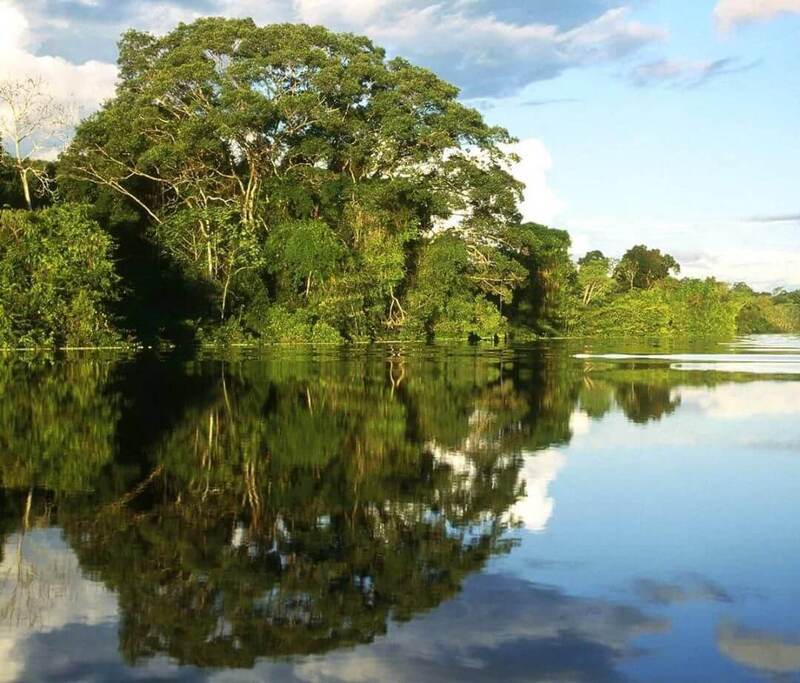
Ericsson marks Earth Day by joining Canada’s ECCC Net-Zero Challenge
Ericsson Canada marked the Earth Day by joining the Environment and Climate Change Canada’s (ECCC) Net-Zero ...

The loss or degradation of 67 percent of mangroves – which are among the most powerful nature-based solutions – can cost the world about $ 82 billion over the damage to be caused by floods, the United Nations Environment Program (UNEP) warned.
An additional 1 percent of mangroves is being lost every year and this means that 39 percent more people would be flooded annually.
Mangroves protect shorelines from eroding and shield communities from floods, hurricanes, and storms, a more important service than ever as sea levels continue to rise. Mangroves also provide nursery areas for marine life and support many threatened and endangered species.
While governments acknowledge the importance of mangroves, the success of restoration efforts has been limited. The new Guidelines on Mangrove Ecosystem Restoration for the Western Indian Ocean Region analyze risks and challenges to restoration projects and point to potential solutions.
Coastal residents in the Western Indian Ocean region – which includes Comoros, Kenya, France (Reunion), Madagascar, Mauritius, Mozambique, Seychelles, Somalia, South Africa, and Tanzania – eat or sell the fish that live around the mangroves; harvest honey from the bees that the forests support, and use their wood as building material and fuel for subsistence or sell it for income.
Because the livelihoods of coastal communities depend on mangroves, restoring them can contribute to “building back better” through green recovery in the wake of the COVID-19 pandemic. Mangrove forests can also drive eco-tourism and create jobs.
“Mangroves really are essential life support system for coastal communities in the Western Indian Ocean region,” said James Kairo, Chief Scientist at the Kenya Marine and Fisheries Research Institute and lead author of the guidelines. “If degradation continues, communities will be without resources for shelter or fuel, food, or a means to make a living.”
The guidelines were developed by the member states of Nairobi Convention with support from UNEP–Nairobi Convention, the Western Indian Ocean Marine Science Association and the Western Indian Ocean Mangrove Network. They can be used by governments; resource managers; scientists; civil society, and communities at large as they embark on mangrove conservation and management initiatives.
“These Guidelines are really the first for the Western Indian Ocean region to address past mangrove restoration failures head-on and assess the reasons why,” said Jared Bosire, UNEP–Nairobi Convention Project Manager. “Of critical importance is that they provide a step-by-step guide on how to build successful restoration projects which avoid several of the pitfalls that we have kept witnessing.”
The Guidelines also feature case studies from around the Western Indian Ocean region, highlighting best practices and lessons learned. They can be used to guide action on mangroves as part of the upcoming UN Decade on Ecosystem Restoration (2021-2030) and support progress towards achieving Sustainable Development Goal 14.2 on protecting and restoring marine and coastal ecosystems. Mangroves also capture and store significantly higher rates of carbon dioxide per unit area than terrestrial forests, so mangrove restoration can be incorporated into countries’ Nationally Determined Contributions under the Paris Agreement.
“It’s hard to overstate just how important mangroves can be to both the environment and economy,” said Kerstin Stendahl, Head of UNEP’s Ecosystems Integration Branch. “They are truly a super solution —without them, we’d have more carbon dioxide in the atmosphere, fewer fish and less food, and more damage from cyclones and other storms.”
Ericsson Canada marked the Earth Day by joining the Environment and Climate Change Canada’s (ECCC) Net-Zero ...
Asia is warming faster than the global average. The warming trend has nearly doubled since ...
IKEA Supply AG and the International Organization for Migration (IOM) team up to promote the ...


اترك تعليقا